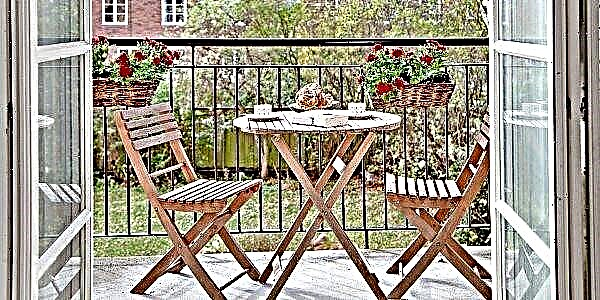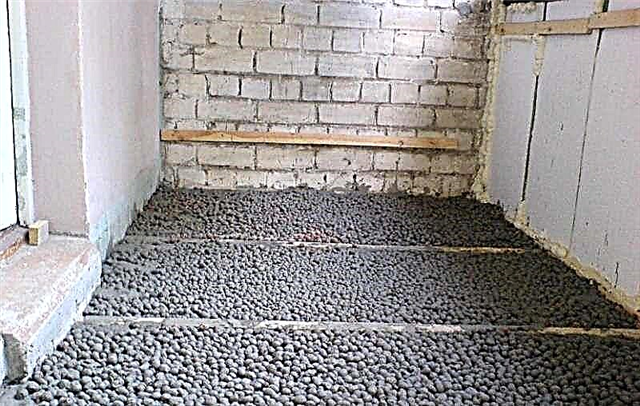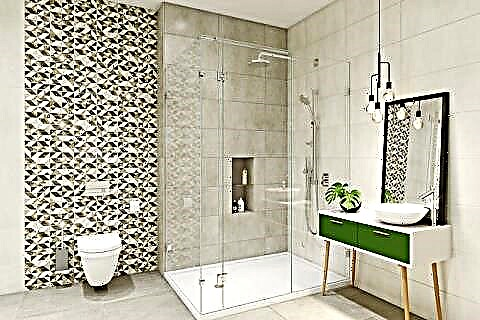The seasonality of the blanket depends on the density of the filler, but even the same material from each manufacturer may be suitable for different temperature conditions, because in addition to it, the cover fabric, the thickness of the product and its quality are important.
p, blockquote 3,0,0,0,0,0 ->
Bilateral models are considered the best option for use at any time of the year. One side of this product is lined with fur or wool, and the other is a regular fabric.
p, blockquote 4,0,0,0,0,0 ->
There are models consisting of two canvases, in the winter they are fastened with buttons or ties, and in the summer they are used separately. Hollofiber and silicone fiber are excellent fillers that provide comfortable sleeping conditions in every season.
For people who prefer natural materials, 4 options are offered.
Bamboo blanket
Bamboo - soft and light, retains its original form and shape for a long time, and is also suitable for people with allergies. It is easy to care for, dries quite quickly after washing. In the winter, its heat is not enough for a comfortable sleep, but for the rest of the year this option is just right.
p, blockquote 6.0,1,0,0 ->
Before choosing an option for 4 seasons, keep in mind that constant high humidity will be harmful to him. The fibers absorb the surrounding water well and make the drying process difficult.
p, blockquote 7,0,0,0,0 ->

The best ECOTEX camel wool blanket Caravan, all-weather
- filling - camel hair,
- case - teak,
- 3 sizes
- costs 2,200-3,600 rubles.
The model tops the rating of blankets for sleeping, because it provides a high level of comfort, has a natural filler with therapeutic properties and is inexpensive. The product made of camel wool perfectly retains heat and quickly warms up. And this, in turn, contributes to the expansion of blood vessels, improve microcirculation, enhance cellular metabolism, accelerate recovery processes. The warmest blanket in the review.
In addition, camel hair contains lanolin, which is a natural antiseptic. Therefore, the product also has an antibacterial effect. Due to the above properties, it will help get rid of the manifestations of various diseases (osteochondrosis, neuritis, arthrosis, rheumatism and others). The teak case is made of linen or cotton. It is hypoallergenic, resistant to abrasion, absorbs moisture well.
An excellent choice for those who have not decided which blanket is the warmest for the winter. The product will please you with comfort and convenience during sleep.
Reviews
Lightweight, warm and absorbent blanket. Provides optimal temperature conditions regardless of the season.
- optimal microclimate during sleep, no greenhouse effect,
- positive effect of wool on the body,
- environmentally friendly products
- affordable price.
The best bamboo blanket for sleeping Verossa Bamboo
- filling - bamboo,
- microfiber case,
- 3 sizes
- It costs 2200–5300 rubles.
The blanket is light, allows the skin to breathe, regulates body temperature. Bamboo has antibacterial properties, so dust mites do not start in it, fungi and other pathogenic microflora do not multiply. Also, it does not collect odors, so it provides a feeling of freshness. The model is included in the top of blankets for sleeping, as it provides a healthy, comfortable and relaxing sleep.
The bamboo blanket has important advantages over other natural fillers: it weighs little, does not crumple, does not clump (it is not necessary to beat), it does not cause allergies, it can be washed.
The best choice for the warm season.
Vs:
- with increased sensitivity to camel hair, an allergic reaction may develop.
The best bamboo blanket for sleeping Verossa Bamboo
- filling - bamboo,
- microfiber case,
- 3 sizes
- It costs 2200–5300 rubles.
The blanket is light, allows the skin to breathe, regulates body temperature. Bamboo has antibacterial properties, so dust mites do not start in it, fungi and other pathogenic microflora do not multiply. Also, it does not collect odors, so it provides a feeling of freshness. The model is included in the top of blankets for sleeping, as it provides a healthy, comfortable and relaxing sleep.
The bamboo blanket has important advantages over other natural fillers: it weighs little, does not crumple, does not clump (it is not necessary to beat), it does not cause allergies, it can be washed.
The best choice for the warm season.
Reviews
The product is great for allergy sufferers. Bamboo is absolutely safe for health, does not collect dust mites, does not absorb odors.
- good air exchange, it’s not hot to sleep under the product,
- antibacterial effect
- environmentally friendly and hypoallergenic raw materials,
- ease of care
- feeling of freshness during sleep.
Vs:
- with frequent washing, the bamboo fiber begins to thin.
The best hypoallergenic swan duvet blanket OLTEX Pearls all-weather
- filling - artificial fluff,
- case - teak,
- 3 sizes
- costs 950-1550 rubles.
Soft blanket consists of artificial filler, similar to swan fluff. It is very light, airy, so the price is compared with the cost of products made from natural material. In this case, the blanket is hypoallergenic, does not absorb odors, does not collect dust. Even people with hay fever, bronchial asthma, atopic dermatitis and other manifestations of allergies can use it.
Care is as simple as possible: just wash the product in a typewriter and let it dry naturally. You do not need to whip anything, the filler returns to its previous form on its own.
Suitable for those who are looking for an inexpensive and very soft off-season blanket.
Best ECOTEX Merino lambskin blanket, all-weather
- stuffing - sheep’s wool,
- case - satin jacquard,
- 3 sizes
- costs 2450-4350 rubles.
The model is included in the rating of warm blankets, as it is made of natural sheep’s wool. This material provides a dry microclimate of a berth, even if a person has increased sweating. The filler absorbs moisture, provides good air circulation.
Sheep's wool is very soft and contains lanolin, which has a therapeutic effect on the body. Cover material - satin-jacquard. This is a durable, wear-resistant, hypoallergenic fabric with a relief structure. Dry cleaning recommended.
A model for lovers of natural and very warm bedding.
How to choose a blanket and which filler is better
To choose the right blanket, you need to know how they differ. The most important thing is to decide which blanket filler is best for you. Conventionally, they are divided into natural and synthetic. The latter, as a rule, are hypoallergenic (provided that the manufacturer used purified fiber without harmful chemical impurities). These include holofiber, artificial fluff, polyester, synthetic winterizer and much more. All of these materials are made of polyester fiber. But they have differences in structure, density, weaving, wear resistance, thermal insulation and other parameters.
What is polyester fiber? Synthetic material made from polyester. Filaments are formed under the influence of different temperatures, which affects the thickness of the final fibers. The material is widely used as a filler for pillows and blankets. It is springy, easily returns to shape after creasing. Lightweight, cheap. Serves for a long time (from 5 years and more). Machine washable. It does not collect bacteria, dust mites, fungi, therefore it is suitable for allergy sufferers, asthmatics, children. But it has one drawback - it does not absorb moisture that the body releases during sleep, so it is not suitable for people with excessive sweating.
As for natural fillers, there is a huge assortment. Many people cannot decide which blanket is better: a camel or a sheep’s (the first warms up in a matter of minutes, sheep’s wool adds a couple of degrees to the temperature of a sleeping person), bamboo or camel’s wool (bamboo is hypoallergenic, for the warm season, wool can cause a cold season, allergies), swan fluff or cotton fiber (fluffy air, soft, and cotton hygroscopic, breathable).
How to choose a good blanket for filler, if there is an allergy? A hypoallergenic product is definitely needed. Which is better: bamboo or holofiber, in this case depends on the budget and time of year. Bamboo fiber - natural, breathable, more expensive. Designed more for the warm season. Synthetic (holofiber) - cheap, can be used all year round, but has low hygroscopicity (practically does not absorb moisture).
When there is no allergy, with which filler it is better to buy a blanket, it depends solely on preferences and the budget that you are ready to allocate for the purchase. It can be both synthetics and natural material, but keep in mind that the latter is more moody in terms of care. Not all fillers are allowed to be washed in a typewriter (for example, fluff, sheep’s wool). They can collect dust mites, are not protected from the development of fungal, bacterial microflora (this does not apply to bamboo, marine, algae, eucalyptus fiber). But such products are more durable, and not a single synthetic fiber can compare with them in terms of softness, hygroscopicity, breathability, thermal conductivity.
You should also decide what material is better to buy a blanket. The cover can be made on the basis of natural or synthetic fabrics, for example, from eucalyptus lyocell or polyester, with cotton or carbon thread. It is important that the material is pleasant to the touch, durable, breathable. These characteristics can boast teak, satin, silk.
A popular synthetic cover material is microfiber. These are extremely thin fibers (as with microgel). Their basis is the thread of polyester and polyamide. Consider the pros and cons of microfiber blankets.
- dries quickly after getting wet,
- hypoallergenicity
- high density and strength,
- thermal conductivity.
Disadvantages:
- spools may form
- low hygroscopicity.
Choose quality rather than low cost. It is better to buy bedding from a well-known company that values its reputation and uses safe materials for the manufacture of products. Goods must comply with sanitary standards, hygiene requirements. The best manufacturers of blankets: ECOTEX, Verossa, OLTEX, Brinkhaus, Billerbeck, DREAM TIME, Ascona.
What does an all-weather blanket mean?
Considering the fact that you have to purchase several common blankets for one person from the family, an all-weather product (also called 4 seasons, a duet, 2 in 1 or winter-summer) will save both the place where it should be stored and the money. Sleeping under it will be neither hot nor cold, if it is chosen correctly, comfort is above all.



 Photo: Togas 4-piece quilt buttoned, silk and cashmere filler
Photo: Togas 4-piece quilt buttoned, silk and cashmere filler
Typically, these blankets are filled with natural materials: bamboo, sheep and camel hair, merino wool, goose down. Today, synthetic products are also gaining more and more popularity.
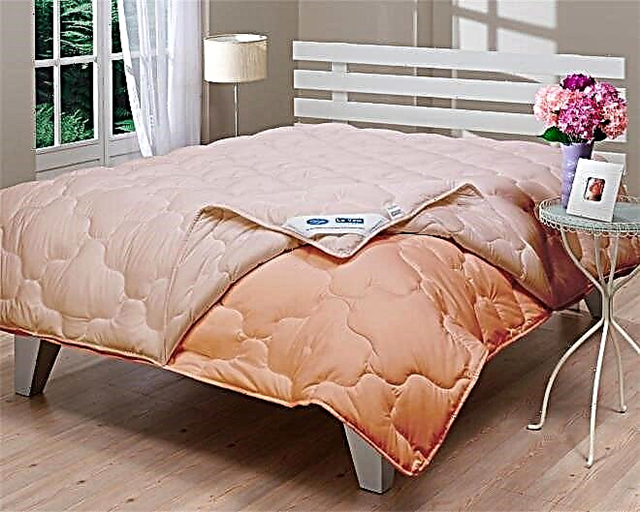
What is its density
Despite the fact that we are talking about universal blankets, they, like summer / winter ones, have their own density value.
The warmest blankets have a density of 420 grams per square meter or more, the lightest - 100-150 grams.
The all-season ones are endowed with an average value of the order of 300 g. One of them has a filler density of the order of two hundred grams, the other - about a hundred. The combined both parts are a warm winter product.

The selection of the product should be carried out taking into account the characteristics of the human body that will use it.
The degree of heat can be determined by the label directly on the product: it either shows numbers from one to five (where five is the warmest blanket), or the digital values are replaced by dots (if one, then the product is thin).
On the buttons
This method is very impractical, since during operation the buttons often open. If a person has a restless sleep, he makes many movements and periodically takes off his blanket - the fastening on the buttons will fail, and in the morning the user will notice that the product is crumpled inside the duvet cover and will have to be fastened again.


On the buttons
Buttons are sewn to one of the blankets at the corners or around the perimeter (three at the same distance in length, two also in width). The eyelets are located on the second product. Small buttons are not suitable - because of the massiveness of the blankets, the threads simply can’t stand them, so the buyer should pay attention to the type of fastening of the purchased goods.
Advantages
- The product can be used year-round, all four seasons.
- The all-weather product is easier to care for: blankets, consisting of two covers, are easily washed and quickly dried separately.
- It takes up little space - saving space.
- Buying one demi-season blanket will be more profitable than buying several for different seasons.

Popular manufacturers
The rating of well-known brands producing all-season blankets is as follows:
| # | Manufacturer |
| 1 | Oltex |
| 2 | Sweet dreams |
| 3 | Ormatek |
| 4 | Ascona |
| 5 | Sleep professor |
| 6 | Dormeo (Dormeo) |
| 7 | Alvitec |
| 8 | Kariguz |
Top 8 is based on user requests in the Internet search engines Yandex, Google and Mail. Seats are randomly distributed.
You can buy products from these manufacturers both in online stores and in retail.
Which is better to choose an all-weather blanket
First, let's determine what types of blankets "4 seasons" exist. Products are:
- camel wool
- from sheep’s wool,
- downy
- synthetic
- silk
- using bamboo fiber.
For each user, the choice of a blanket is a process that must meet his individual requirements. If the buyer feels the need for maximum insulation, then he should choose the most dense blanket, but on the contrary - the lightest of all-season. This issue will be considered in more detail below.

How to choose the right one
The right choice should meet the needs of the user:
- If a person does not purchase a blanket for permanent use (for guests), then a synthetic hypoallergenic product is suitable. It is easy to wash, dry. It does not take up much space.
- In the event that the buyer is allergic to wool, a bamboo fiber product will be a good choice. Regarding other types, this is the most inexpensive, but not inferior in comfort.
- Camel and sheep’s wool have medicinal properties, blankets with such fillers are ideal for people who have weak immunity: wool is an assistant in the prevention of colds, and will also be useful to customers suffering from arthritis, neuralgia, and neuritis.
- Duvets are the most expensive, but the most “breathable” and comfortable. Suitable for people who find it difficult to fall asleep quickly due to inconvenience and the influence of external factors (in this case, a bad blanket or bedding).
- Silk products are pleasant to the body, cost about the same as fluff blankets. Air passes through them perfectly, take off comfortably under the bed at any time of the year (regulate heat transfer). Silk blankets rarely house dust mites.
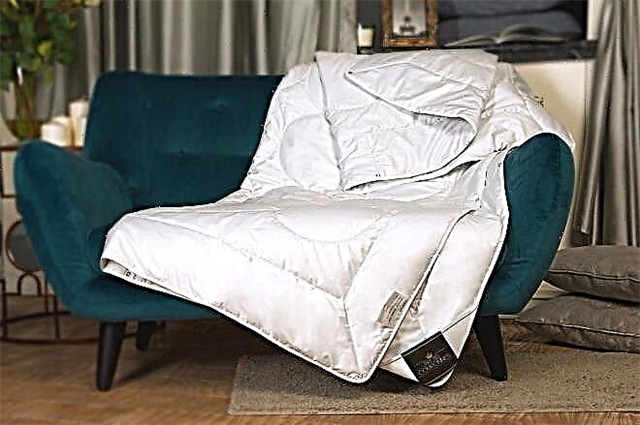
This article addressed all issues related to all-season blankets. This product meets most user requests. It is a great alternative to summer and winter types of blankets.
For winter
A winter blanket should fit your physiological and psychological characteristics as much as possible. Some people are hot all the time, while others cannot get warm. In order not to play the role of Princess Nesmeyana (hot - cold) on long winter nights, but to wake up asleep and full of energy, choose a product under which you will not be cold and not hot, but just warm.
The filler for this important bedding is natural and synthetic. Natural fillers include cotton wool, fluff, wool, silk, bamboo.
Watu can be attributed to classic, traditional fillers. Not much time has passed since when a cotton blanket was practically the only way to keep warm in bed. The advantages include a low price, good moisture absorption and heat retention, hypoallergenicity, environmental friendliness. But today the demand for them has decreased, because this is not a very practical instance and the list of claims against it is quite impressive:
- the quilt is quite heavy
- absorbs moisture well, gives it back poorly,
- because of its density, it cannot create a streamlined effect, that is, take the form of a covered body and exclude drafts,
- is an active dust collector,
- over time, cotton wool gets lumpy,
- difficult to maintain: it is incredibly difficult to wash, and if it succeeds, it is even more difficult to dry.


Down is the warmest winter blanket. This is the opinion of most buyers. The underlying quality here is maximum heat with minimum weight. According to the criterion of lightness, the downy version is ahead of all the others. In the manufacture of models using eider, goose and duck down. As well as a mixture of down and feathers.
Even pronouncing the word “downy”, there is an association with lightness, softness and comfort. The warmest instance of a winter blanket weighs no more than one kilogram. The lightness of the blanket and its ability to take on the shape of the body allow the sleeping person to feel covered in a warm air cloud. It has good thermoregulation.


Careful care and compliance with certain rules will ensure a long life of the product, keep it fluffy and warm, and the holder will be allowed to enjoy tenderness and softness for a long time.
It is recommended to whisk the product regularly to avoid the formation of lumps, dry and ventilate so that the fluff does not damp.
Quality and comfort are always in the price. The cost of downy pleasure depends on which bird “shared” its down to fill your blankets. Duck fluff in this price list is in third place. On the second - goose down. The most expensive fluff of the northern loon is recognized, and there are good reasons for this: the warmest, difficult to collect, and also has some medicinal properties.

The only consumers who are not advised to enjoy "heavenly bliss" are people prone to allergies. They are not recommended to purchase another type of blankets - wool, which also cause allergic reactions of the body. But they can be useful for people with problems of the musculoskeletal system.
We are talking about fillers from sheep and camel wool, which are recognized as high-quality insulation.
In winter, quilted woolen blankets are very popular. Compared to downy ones, they are heavier, but less voluminous. They absorb moisture well, maintaining dry heat and maintaining a constant temperature. Wearproof, strong, durable. Very easy to clean: they can be easily cleaned, they can withstand even a date with the washing machine "in gentle mode." Just like all natural things, they like to bask in the sun and ventilate.


The cost of sheep’s wool is less than the cost of camel’s, but in medicinal properties one other is not inferior.
The problem with these fillers is that both people and moths like them, so they must be stored together with insect repellents.
One cannot fail to mention another filler from animal fluff - cashmere. For him, a down goat is a supplier of fluff. The filler is hypoallergenic, resistant to rolling and wear, does not irritate the skin, is very gentle and soft to the touch, durable, warm, light.
Promising are bamboo blankets. Having recently appeared on the market, a filler made of bamboo fiber has won many admirers among consumers who found a lot of it positive properties and benefits:
- good heat conductor and temperature controller,
- has natural properties to destroy bacteria and fungi,
- perfectly breathable, allowing the skin to breathe,
- does not cause allergies
- does not accumulate dust and odors,
- lightweight
- wear resistant
- not demanding in care.


All these features are inherent in a high-quality, natural product. Therefore, if you decide to try out this new product for yourself, be very careful in your choice so that you do not feel cheated and disappointed.
Having dealt with natural fillers, having weighed the pros and cons, it remains to analyze artificial fillersquite common in the modern market: synthetic winterizer, holofiber, tinsulate, polyester fiber, nanofiber. Differing among themselves in small nuances, the main qualities they have in common are:
- long service life
- safety, non-toxicity,
- lack of components that cause allergies,
- unpretentiousness in leaving,
- quick recovery of volume, shape.
Also the ability not to absorb extraneous odors, not to ignite, perfectly retain heat. Mites and other pests will not get into them. There are also disadvantages: synthetic blankets are not hygroscopic and quickly electrify.
When choosing between the pros, cons, nuances and features, remember: the main criterion is convenience and comfort.
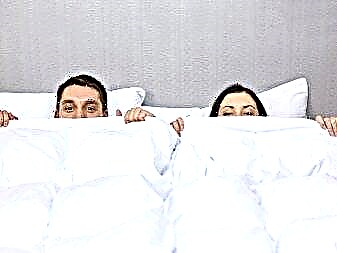

For summer
Winter and summer blankets have one goal - to provide a comfortable microclimate. But winter should warm, and summer should not be allowed to freeze from drafts of open windows or air conditioners. Fillers in summer versions are preferable to choose natural, "breathable", moisture-absorbing, hypoallergenic: bamboo, cotton, silk.
Under a light bamboo blanket, terry cotton bedspread, thin woolen blanket in a satin cover, you will be very comfortable and not hot in the summer. A delicate silk cloud with a smooth cool surface is an ideal option for summer. The only question is whether you can financially afford this oasis of bliss and bliss.
Dimensions
The size of the blanket you choose depends on the size of your bed, as well as your sleep pattern. It is very important that the blanket does not hamper the sleeping person and allows him to toss and turn and get comfortable in bed. Therefore, the blanket is usually taken with a "margin", that is, more than the width of the bed.
The following categories are distinguished by size:
- children’s which can be rectangular or square and fit both in the crib and in the baby's stroller,
- one and a half or single. One and a half, probably because the standard width is one and a half meters, although sometimes it can be slightly wider. Very comfortable to care for. Because of the convenience, two one and a half blankets are included in the “family” suite, designed for a double bed,
- double, for a standard double bed. For couples who are completely uncomfortable under different blankets. The width of such blankets is from 1 m 72 cm to 1 m 80 cm,
- Euro size. It is becoming more popular today. Two-meter wide will allow the couple to feel comfortable and not try to “pull” the blanket over themselves: enough for both and no one will feel left out.

Which is better to choose?
Choosing a blanket is a very important and responsible business. Ultimately, your mood and emotional state depend on it, because healthy sleep is an important component of a person’s mental health. So, we list the selection criteria.
- Degree of heat: very warm, warm, standard or normal, light, light summer. The choice is purely individual, aimed at the physiological characteristics of each and the temperature regime in the bedroom. Depends on the density and material of the filler.
- Filler density measured in grams per square meter and the larger the number, the warmer the blanket. The warmest blanket has a density of more than 400 g per square. m. For a summer blanket, this figure is no more than 200. We have already examined the filler material in this article in sufficient detail.
- The size of the blanket. This criterion is also selected based on your habits and preferences.
- Variant of embodiment. Decide for which season you choose a blanket, and what will be more comfortable for you: a blanket, a blanket or a plaid.
- Sewing methods. The life of the product largely depends on the method of fixing the filler. The most short-lived are linear and quilted firmware, where the filler quickly gathers into lumps. The sectional and cassette methods of fastening, as well as the “carostep” - fixing the filler with curly stitching have proven themselves better.

- Blanket Covers. The main requirement for the fabric is the ability to hold the filler inside the blanket, to prevent it from "getting out". And they should make the blanket soft, breathable, comfortable, and durable. The more fluffy and naughty the filler, the denser the fabric should be. Universal for covers is cotton. Teak, satin, calico, Jacquard, silk deserved good reviews. Their main characteristic is reliability and naturalness.
- Weight. Also an important criterion. One wants to feel covered with a light cloud, the other, on the contrary, needs heaviness to feel comfortable and protected.
- Safety for health. People with allergies should be very attentive to the study of the properties of the filler and the cover, and choose exclusively hypoallergenic materials.
- Price. When choosing cheaper, don’t sacrifice quality. It will be uncomfortable for you to sleep under a cheap blanket, it will quickly become exhausted and you will become a hostage of the saying “avaricious pays twice”.
When choosing a blanket, compare their characteristics, properties, do not forget to take into account your habits and preferences. Today's market is so rich and diverse that you are sure to find the best option.
See how to choose a blanket for summer or winter in the next video.
Duvets
The swan fluff version is considered both light and warm. Fluff promotes the access of air and absorbs excess moisture secreted by a person during sleep.
p, blockquote 9,0,0,0,0 ->
Of the minuses, it is worth noting the need for regular washing.
p, blockquote 10,0,0,0,0 ->
When choosing, make sure that inside is just the fluff from the swan, and not a rough goose analog. Such a filler is considered very allergenic, so people suffering from this disease should choose artificial alternatives.
Camel Wool Blanket
A camel hair model is not suitable for all 4 seasons, it warms a person perfectly in winter, but in summer you want to choose a lightweight option. In addition, it is considered warmer than sheep. Of the advantages, it is worth noting the ability of the material to absorb and evaporate excess liquid.
p, blockquote 12,1,0,0,0 ->
Long service life allows you to buy one product and use it for many years in a row. The only problem that owners of such bedspreads may encounter is a mole that can ruin a thing.
Silk blanket
The silk bedspread is light and durable, and most importantly creates ideal temperature conditions for sleeping. In the summer, it cools the body well, and in winter retains heat. Natural silk does not accumulate dust unlike wool, so it is most suitable for allergy sufferers. The antibacterial effect of the fibers will not allow ticks and other parasites to settle in the product.
p, blockquote 14,0,0,0,0 ->
Of course, products from any material are treated with a special composition against harmful bacteria, which loses its properties from washing, and silk fibers provide protection after many cleanings, because this is their natural feature. The disadvantage of such products is only the high price.
p, blockquote 15,0,0,0,0 ->

Selection recommendations
Even if the manufacturer claims that the blanket is suitable for use during all 4 seasons, it must be remembered that the separation of the seasons is conditional. First of all, consider the wishes of a particular person, his susceptibility to heat and cold, as well as the presence of allergic reactions to materials.
p, blockquote 20,0,0,0,0 ->
For those who usually feel cold, it is better to buy a product with a dense, heavy filler, such as wool or down. And in the summer, when it's hot, it is worth stopping at models made of light bamboo or synthetics.
p, blockquote 21,0,0,0,0 ->
Evaluate the longevity of a thing, because you will hide it all year. The cassette assembly is considered the most practical, the filler in this case is placed in the rectangles connected in one solid canvas. They retain their shape, and the inner filling does not turn into lumps.
All-season items filled with artificial fibers are good for guests. They are not expensive and hypoallergenic, which means they are suitable for everyone. During storage, they will not take up much space, and after the visit, guests can easily wash and remove them until the next time.
p, blockquote 23,0,0,0,0 ->

Material
The properties of any blanket: both summer and winter, depend primarily on the material from which it is made. The material used to make the winter blanket should retain heat. But spring and summer blankets should be made of a material that removes this heat, on the contrary. That is, thermoregulation comes to the fore at this time of year.
Ability to well dissipate heat is possessed, first of all, by such materials as silk, linen, bamboo, tensel. If one of them was used to make a blanket, then it will be cool enough and, which is also very important, not heavy.
Do not think that fillers such as wool, cotton and fluff will make the blanket too warm. On the contrary, they help the body not to overheat under the covers, as they are able to pass air well.
Cotton blankets made of cotton do not lose their popularity today. They are quite light, they do not have a cover. This is the best option for a small child.
Now in more detail we will consider those materials that are most often used for the manufacture of summer blankets.
Cotton
The cotton blanket not only absorbs moisture well, but is also hypoallergenic. Another important advantage is ease of care. This product is easy to wash, you can use a washing machine for this.
After washing and subsequent drying, it will not lose either its attractiveness or its positive properties, the main of which were mentioned just above. Therefore, loading it into the washing machine, you can not worry about anything.
Thanks to such a wonderful advantage as ease of care, cotton blankets do not need a duvet cover.
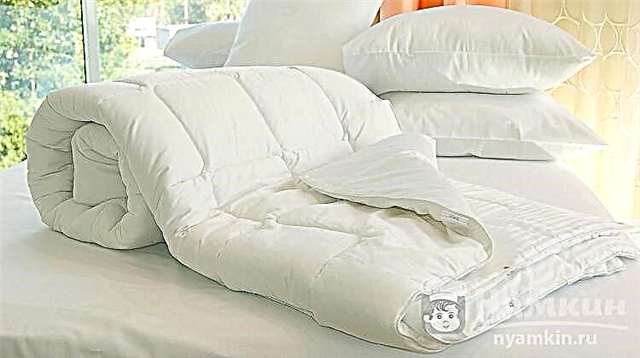
Silk products help the skin breathe, and also restore the skin. This blanket absorbs moisture well, so it is suitable for those who suffer from excessive sweating.
Silk is a hypoallergenic material, bacteria do not appear on it and insects do not start. If it was decided to choose a silk blanket for spring and summer sleep, then you should pay attention to the quality of the material and its naturalness.
It is not necessary to purchase an artificial silk substitute, believing that it has the same properties that are inherent in a natural material. An artificial analogue is devoid of many of the positive properties that are inherent in real silk. Therefore, those who are worried about their health in general and about the quality of sleep in particular, it is not recommended to save on buying blankets.
Viscose
Spring and summer blankets made from viscose are also very popular. Such a product is quite soft and pleasant to the touch. It absorbs moisture well and does it even better than cotton blankets.
But, unfortunately, viscose has a serious drawback. And it consists in the fact that the material can easily be damaged. Therefore, this blanket is not recommended for washing, it is better to use a dry cleaning method.
When choosing a blanket, you need to pay attention to its weight. It is clear that this characteristic depends mainly on the filler. And this dependence is directly proportional: with increasing filler, the blanket becomes heavier. But how much filler should be in the spring and summer blanket?
As a rule, light blankets intended for summer sleep include those products whose filler density varies from 100 g / sq. m up to 250 g / sq. m. In this case, most often on sale you can find models with a filler density of 200 g / sq. m

All season models
More recently, specialty blankets have appeared in stores specializing in the sale of bedding, which are suitable for both summer and winter sleep.
Their popularity is gradually growing every day, as well as the number of people who respond positively about them. All-season blankets have many advantages. We will name the main of them.
1. Versatility
Such products are universal: they can be used at any time of the year, and sleep in any case will be comfortable. They will protect from winter cold, and from spring cool, and from summer heat.
This means that the owner with the completion of one season and the onset of the next will not have to rack their brains for a long time on where to put the old blanket, where to get a new one, etc.
3. Easy storage
There are no difficulties with the storage of an all-weather blanket. All that needs to be done with the advent of spring is simply to separate one of the components and put it somewhere. In the designated place, this element of the blanket will be stored until the next cold season.
Anyone will agree that storing a single item is much easier than a whole thick winter blanket. After all, it takes up little space.
4. Savings
An all-weather blanket is sold at a higher price than the more traditional types - summer and winter. However, it should be borne in mind that it will be used both in summer and in winter, so in general the buyer will save a lot.

There is no need to rush when choosing a blanket. Weigh everything carefully so that you can purchase the most suitable option. First of all, it is worth paying attention to the material of manufacture and to the weight of the product. It is important, of course, to always remember your individual characteristics.

